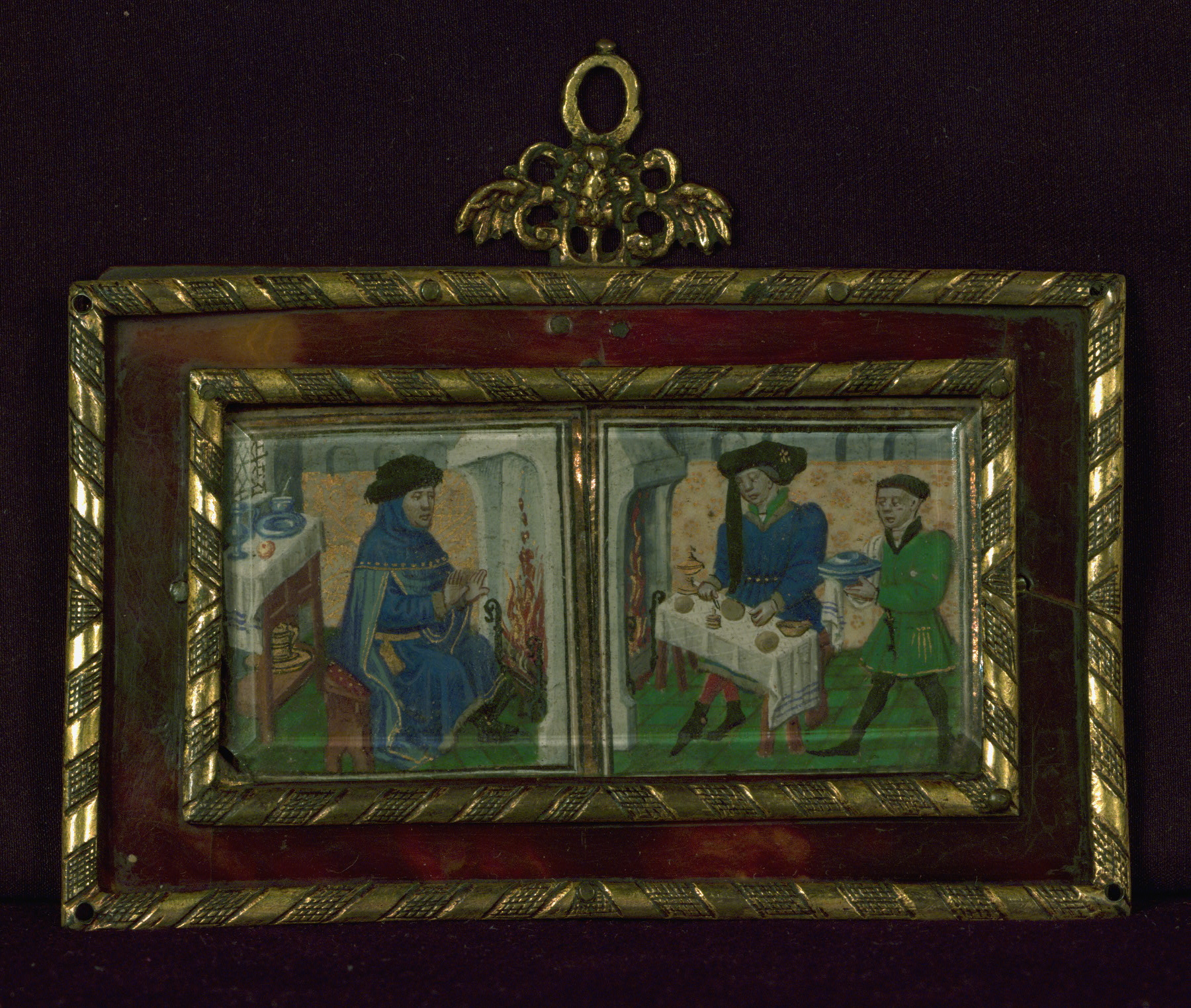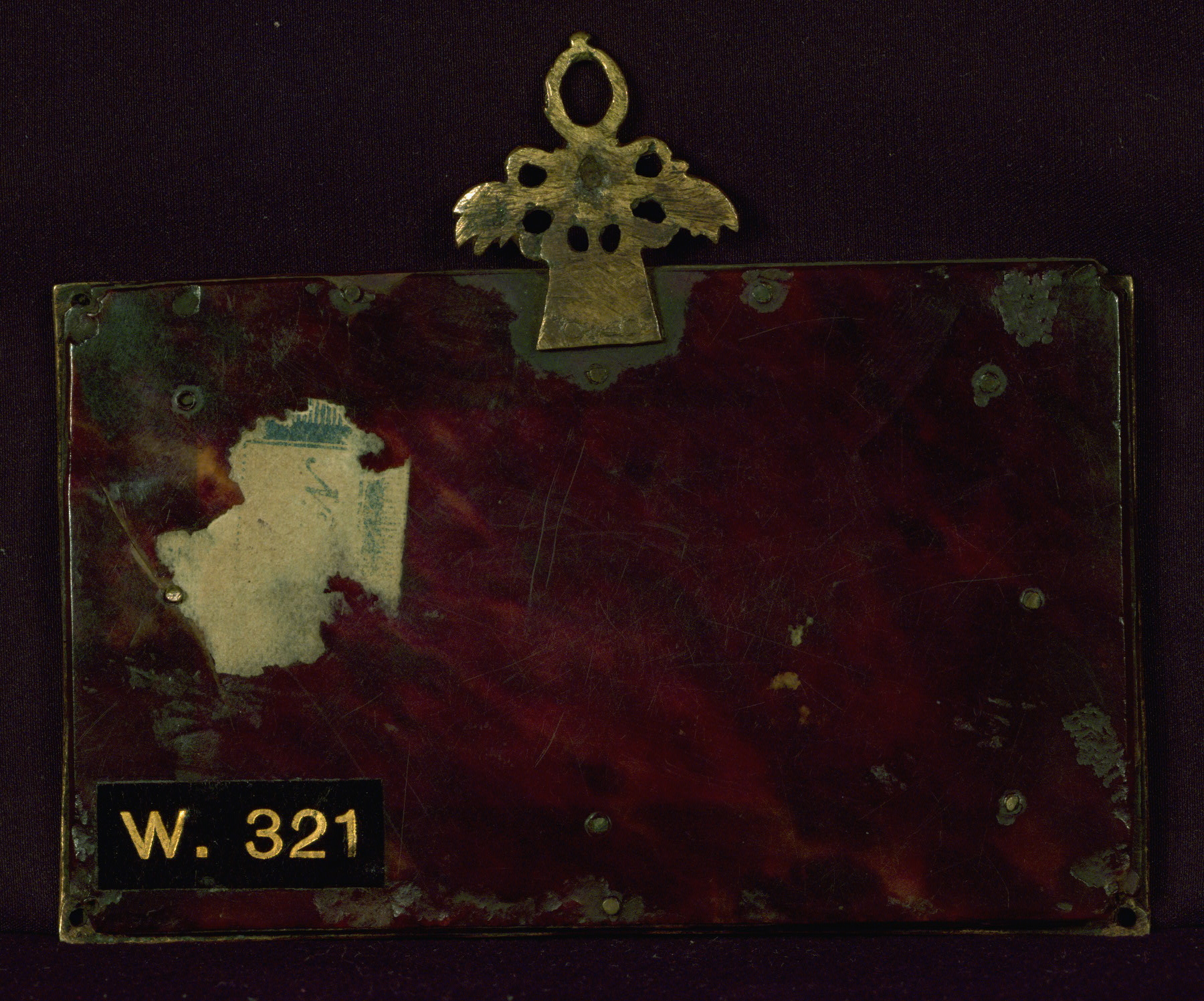Calendar Illustrations from a Book of Hours
(Medieval Europe , Manuscripts and Rare Books)
These two illuminations were cut out of a deluxe Book of Hours that was originally created ca. 1450-60. It is likely that they are by an artist based in Bruges, as they are stylistically related to works from that region in that period (see, for example, W.240). They have been compared to the miniatures in the Hours of Juana Enríquez (Madrid, Biblioteca de Palacio, unnumbered), as well as to the work of the Master of Girart de Roussillon, active in Brussels ca. 1450-70. The images came from the January and February calendars, although they were framed in the reverse order, with February on the left, and January on the right. A frame of tortoise shell and gilded copper was created for their display, likely in the seventeenth century, and the date of the frame may suggest when the images were removed from their original manuscript context.
Provenance
Provenance (from the French provenir, 'to come from/forth') is the chronology of the ownership, custody, or location of a historical object. Learn more about provenance at the Walters.
Acquired by Henry Walters; by bequest to Walters Art Museum, 1931.
Exhibitions
| 1986 | The Four Seasons. The Walters Art Gallery, Baltimore. |
Geographies
Belgium, Bruges (Place of Origin)
Measurements
H of individual fragments: 1 3/16 × W: 1 3/16 in. (3 × 3 cm); Framed H: 2 1/16 × W: 3 3/8 in. (5.3 × 8.5 cm)
Credit Line
Acquired by Henry Walters before 1931
Location in Museum
Not on view
Accession Number
In libraries, galleries, museums, and archives, an accession number is a unique identifier assigned to each object in the collection.
In libraries, galleries, museums, and archives, an accession number is a unique identifier assigned to each object in the collection.
W.321




